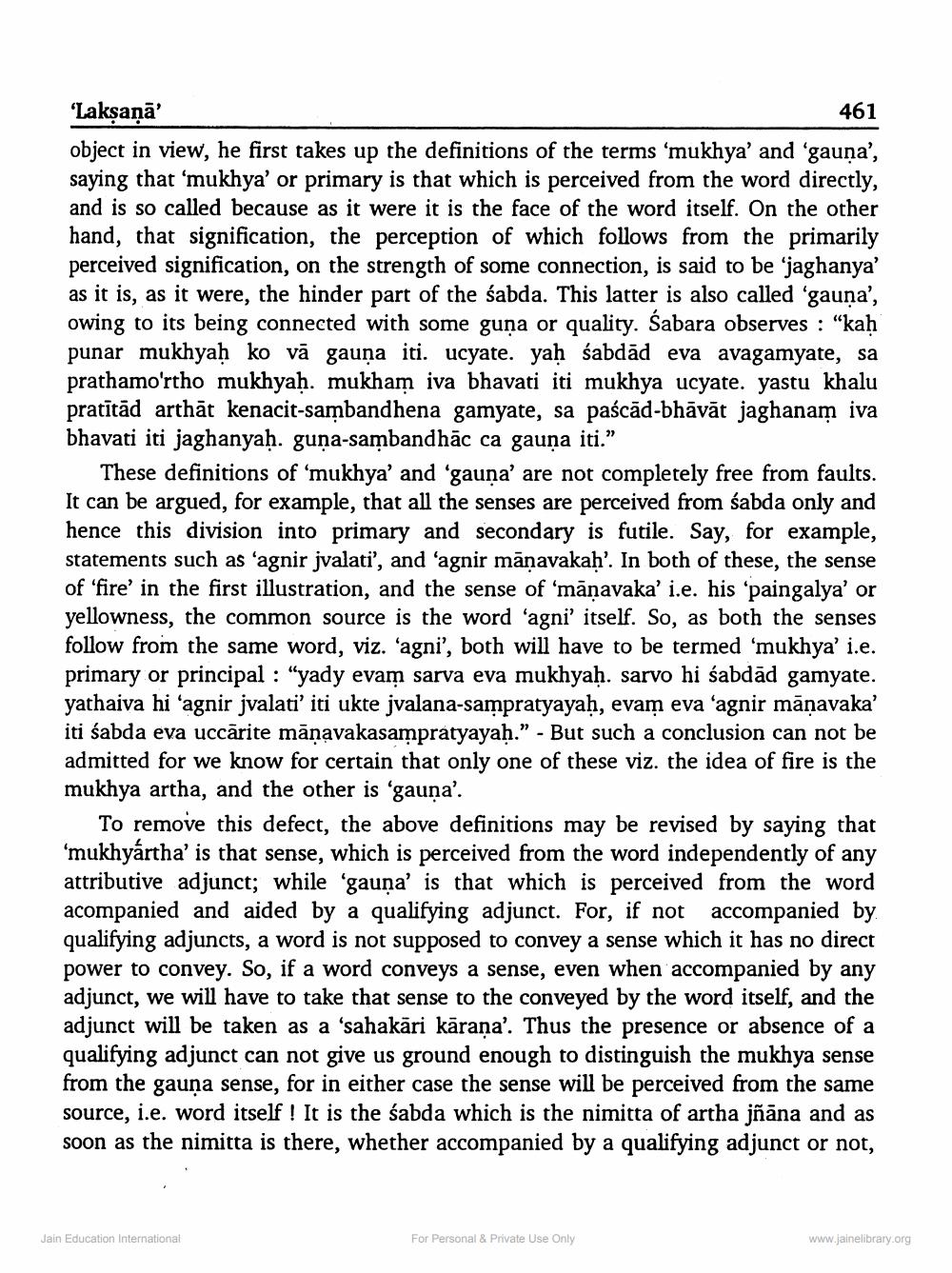________________
‘Laksaņā
461 object in view, he first takes up the definitions of the terms 'mukhya' and 'gauna', saying that ‘mukhya' or primary is that which is perceived from the word directly, and is so called because as it were it is the face of the word itself. On the other hand, that signification, the perception of which follows from the primarily perceived signification, on the strength of some connection, is said to be 'jaghanya' as it is, as it were, the hinder part of the sabda. This latter is also called 'gauna', owing to its being connected with some guņa or quality. Sabara observes : "kah punar mukhyaḥ ko vā gauna iti. ucyate. yah sabdād eva avagamyate, sa prathamo'rtho mukhyaḥ. mukham iva bhavati iti mukhya ucyate. yastu khalu pratītād arthāt kenacit-sambandhena gamyate, sa paścād-bhāvāt jaghanam iva bhavati iti jaghanyaḥ. guņa-sambandhāc ca gauna iti."
These definitions of 'mukhya' and 'gauna' are not completely free from faults. It can be argued, for example, that all the senses are perceived from śabda only and hence this division into primary and secondary is futile. Say, for example, statements such as 'agnir jvalati', and 'agnir mānavakah'. In both of these, the sense of 'fire' in the first illustration, and the sense of 'manavaka' i.e. his 'paingalya' or yellowness, the common source is the word 'agni' itself. So, as both the senses follow from the same word, viz. fagni', both will have to be termed 'mukhya' i.e. primary or principal : "yady evam sarva eva mukhyah. sarvo hi śabdās gamyate. yathaiva hi 'agnir jvalati' iti ukte jvalana-sampratyayah, evam eva 'agnir mānavaka' iti śabda eva ucсārite mānavakasampratyayah." - But such a conclusion can not be admitted for we know for certain that only one of these viz. the idea of fire is the mukhya artha, and the other is 'gauna'.
To remove this defect, the above definitions may be revised by saying that 'mukhyártha' is that sense, which is perceived from the word independently of any attributive adjunct; while 'gauna' is that which is perceived from the word acompanied and aided by a qualifying adjunct. For, if not accompanied by qualifying adjuncts, a word is not supposed to convey a sense which it has no direct power to convey. So, if a word conveys a sense, even when accompanied by any adjunct, we will have to take that sense to the conveyed by the word itself, and the adjunct will be taken as a 'sahakāri kārana'. Thus the presence or absence of a qualifying adjunct can not give us ground enough to distinguish the mukhya sense from the gauna sense, for in either case the sense will be perceived from the same source, i.e. word itself ! It is the sabda which is the nimitta of artha jñāna and as soon as the nimitta is there, whether accompanied by a qualifying adjunct or not,
Jain Education International
For Personal & Private Use Only
www.jainelibrary.org




